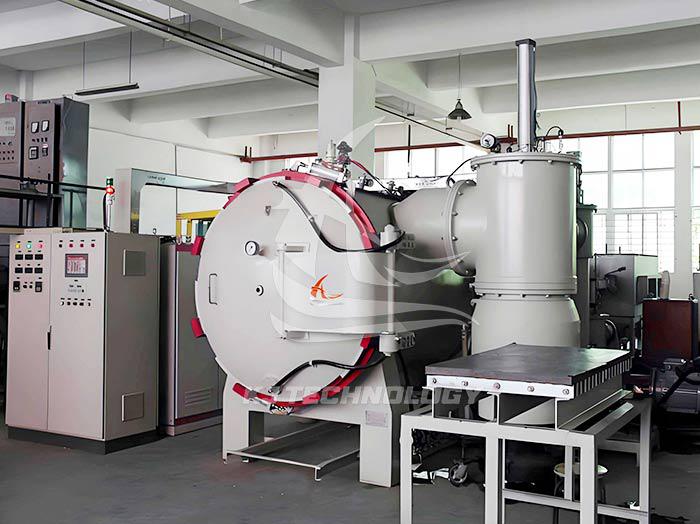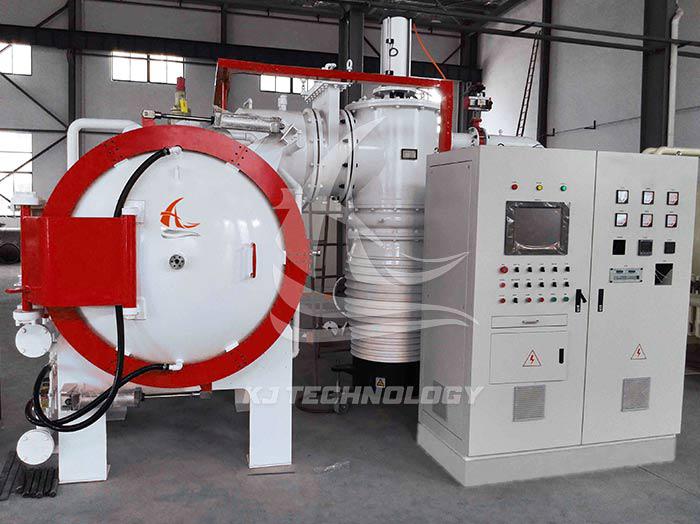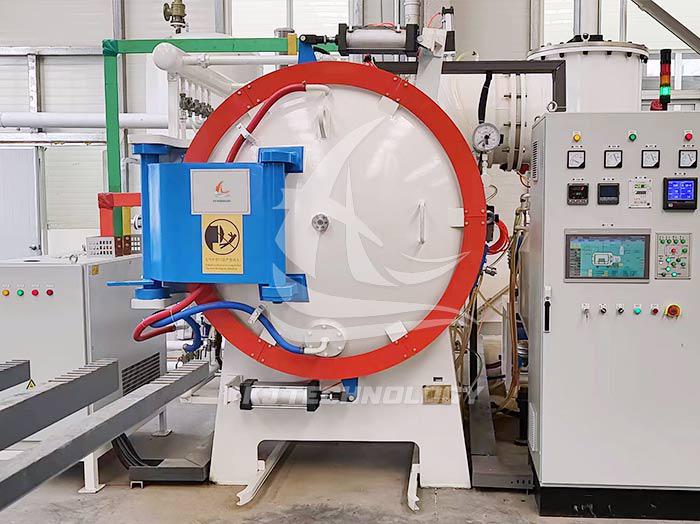Application of High Vacuum Hot Pressing Furnace in Composite Materials Industry
 07-18-2025 Author: KJ technology
07-18-2025 Author: KJ technology
The application of high vacuum hot pressing furnace in the composite materials industry is extensive and critical. Through the synergistic effect of vacuum environment and pressure, the performance and production quality of composite materials are significantly improved. The specific application scenarios and technical advantages are as follows:
1. Core application scenarios
Processing of carbon fiber composite materials
In the aerospace field, high vacuum hot pressing furnaces are used to manufacture components such as aircraft antenna covers, cable trays, and control surfaces. Carbon fiber composite materials can reduce aircraft weight by 20% -30%, improve flight speed and durability. For example, a certain aviation manufacturing company uses vacuum hot pressing technology to connect high-temperature alloy components, which improves engine heat resistance by 15% and fuel efficiency by 8%.
In the field of automobile manufacturing, it is used to produce car floor panels, door lining panels, engine hoods, etc. Fiberglass and carbon fiber composite materials can reduce car weight by 15% -20%, improve fuel efficiency and safety. A certain car company optimized the body structure through vacuum hot pressing technology, reducing the weight of the entire vehicle by 18% and increasing the range by 12%.
Preparation of Ceramic Matrix Composite Materials
High temperature structural materials: Under vacuum hot pressing conditions, silicon carbide (SiC) fibers are composite with titanium alloy matrix, and SiC fiber-reinforced titanium alloy matrix composites are prepared by eliminating pores and gaps through element interdiffusion under high temperature and high pressure. The high temperature resistance of this material has been improved by 30%, making it suitable for high-temperature components such as aircraft engine turbine blades.
Wear resistant materials: Vacuum hot pressing furnace is used to prepare boron carbide (B4C) ceramic matrix composites. By adding sintering aids and applying pressure, the relative density of boron carbide ceramics can reach 91.6% and the hardness can reach 292.5 GPa, making it suitable for wear-resistant scenarios such as cutting tools and bulletproof armor.
Metal/ceramic diffusion welding connection
Heterogeneous material connection: The vacuum hot press furnace achieves reliable connection between ceramics and metals through atomic diffusion under high temperature and high pressure. For example, by vacuum hot pressing and welding alumina ceramics with stainless steel, the joint strength can reach 300MPa, meeting the requirements of the aerospace industry for high-temperature and corrosion-resistant connections.
Complex structure forming: This technology can weld large section joints and complete multiple joint welding at once, increasing efficiency by 50%. A certain medical equipment company uses vacuum hot pressing welding technology to manufacture heart stents, with excellent biocompatibility of the welded joints and good clinical application performance.
2. Analysis of Technical Advantages
Inhibit oxidation and impurity doping
Vacuum environment (pressure<10 ⁻ ² Pa) reduces gas molecule collisions and lowers the probability of material reactions with oxygen and nitrogen. For example, carbon fiber composite materials have a surface oxide layer thickness of<1 μ m and impurity content of<0.01% during vacuum hot pressing, meeting the requirements of high purity.
Optimize microstructure and enhance mechanical performance
Pressure assisted sintering refines the grain size to the nanometer level (0.1-1 μ m), increases the grain boundary area by 30% -50%, and increases the resistance to dislocation motion. After vacuum hot pressing, the Young's modulus of boron carbide ceramics at room temperature reaches 292.5 GPa, and the tensile strength increases by 25% -30%.
Reduce sintering temperature and shorten process cycle
The temperature of vacuum hot pressing sintering is 200-400 ℃ lower than that of atmospheric pressure sintering, and the sintering time is shortened by 50% -70%. For example, silicon carbide ceramics can achieve high density by hot pressing sintering at 2150 ℃ for 10 minutes, while atmospheric pressure sintering requires over 2300 ℃ and takes several hours.
Realize efficient production and quality control
High degree of automation: using programmable logic controller (PLC) to achieve one click start, the LCD screen displays the equipment status in real time, making it easy to monitor and adjust process parameters.
Accurate temperature gradient control: The high-precision temperature control system ensures uniform temperature changes during the hot pressing process, avoiding the problem of increased internal resistance caused by the closure of membrane micropores.








